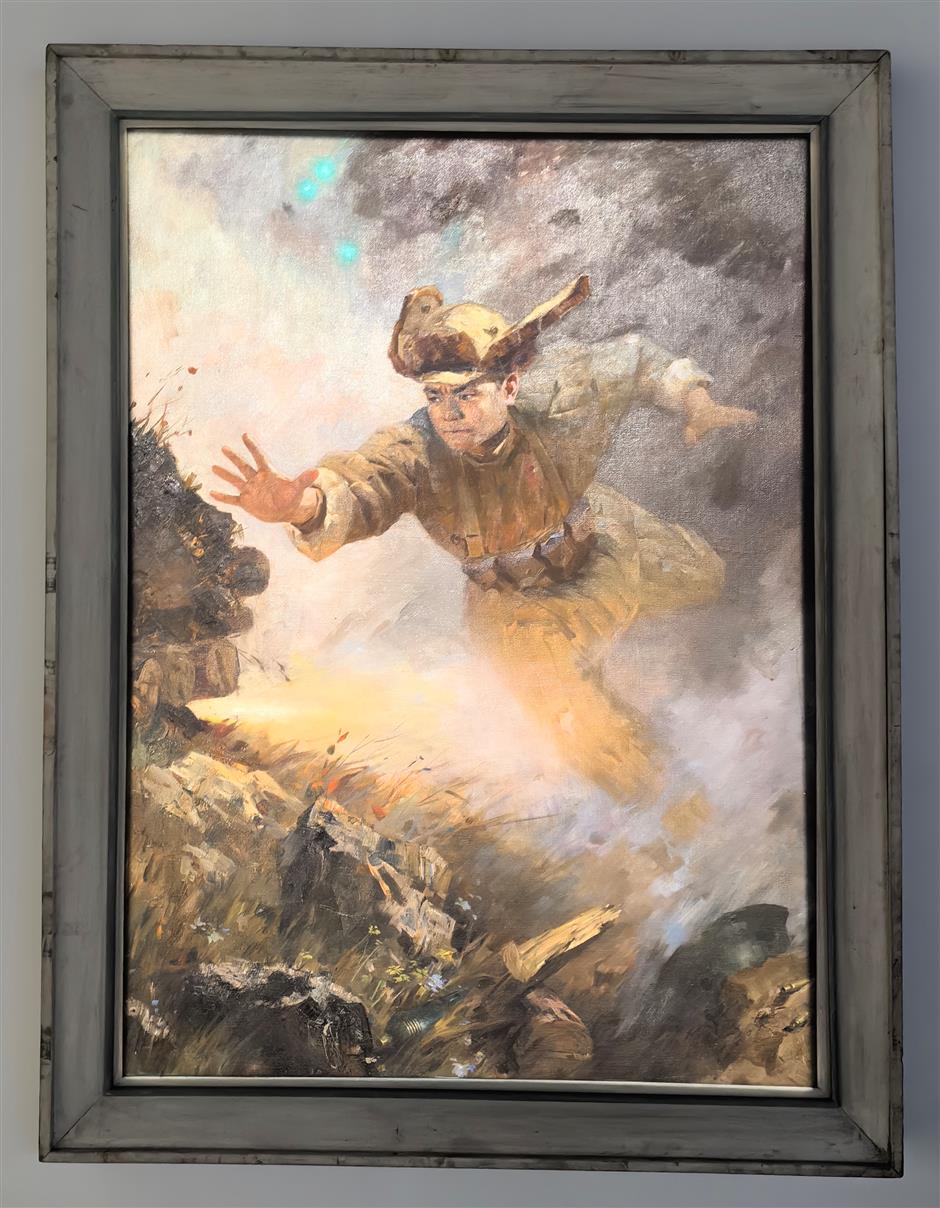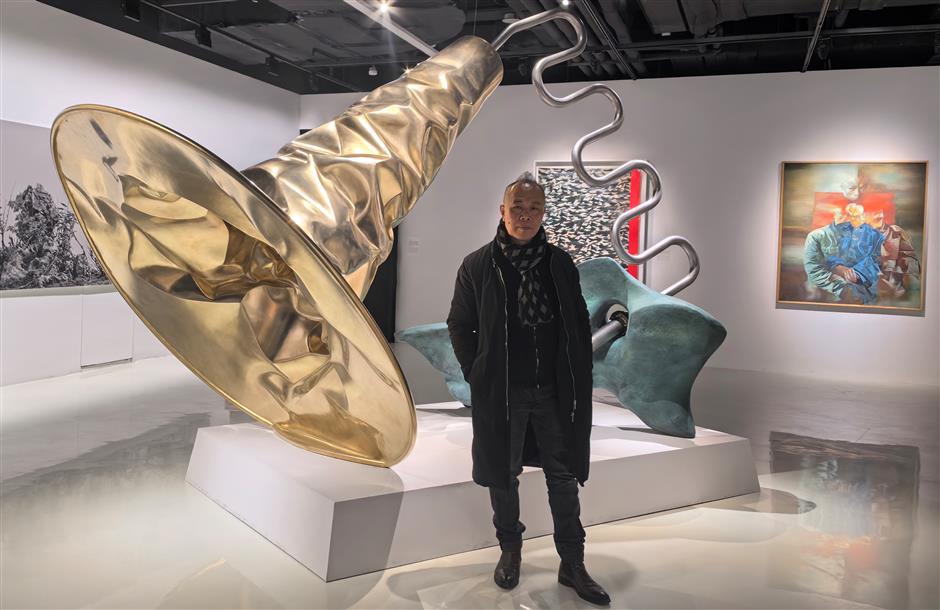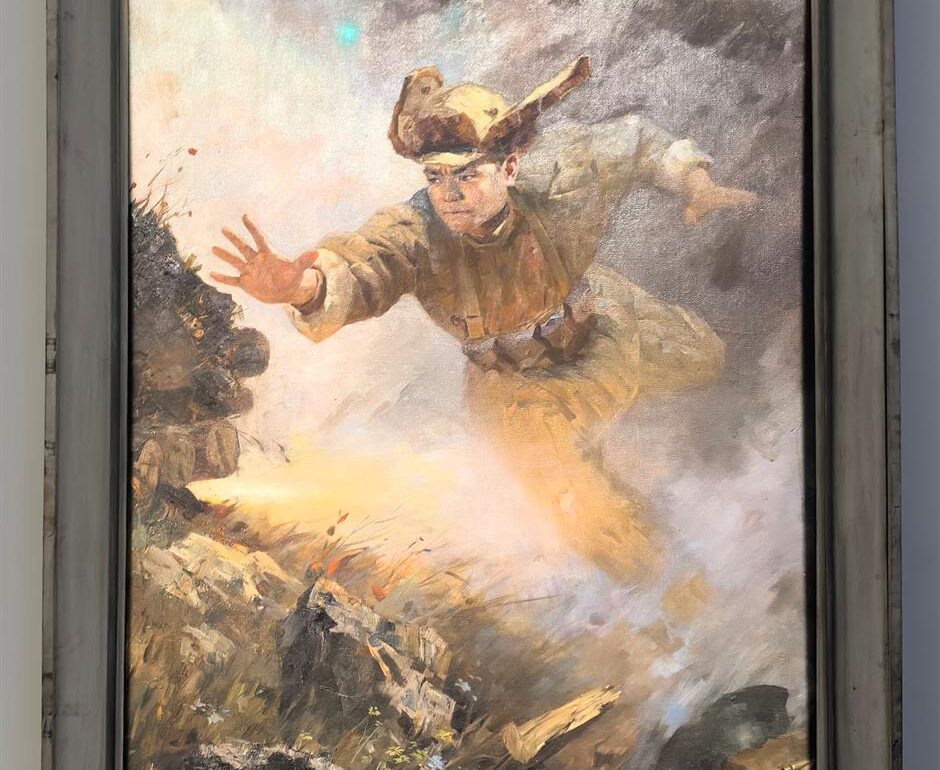The new Hangzhou Central Art Museum, which opened on December 22, represents a novel approach to business and art.
The museum is jointly run by Hangzhou Center Shopping Mall and the China Academy of Art.
Beijing and Shanghai are home to a large number of shopping centers that display artwork, sculptures, and installations. However, Wang Yan, the museum’s curator, said that most of the exhibits are from the collections of private companies.
“We are different. The CAA will bring in loaned exhibits from galleries and artists, as well as produce richer exhibitions appropriate for the shopping mall.”

Oil painting “Huang Jiguang” by Zhang Hongzan
Today, commercial complexes are deemed appropriate venues for displaying the city’s modern lifestyles and avant-garde artworks. The integration of culture and business is an irreversible trend in the commercial world.
“This museum is more grounded and in touch with the people. It is building a bridge between the ivory tower and the mainstream,” said Zhang Songren, a CAA professor.
The inaugural exhibition, “Embark Hang,” which features 100 works by 40 local artists, is currently on display and will run until May 5, 2024.
The centerpiece is Zhang Hongzan’s 1976 oil, Huang Jiguang (1931–1952). The image is well-known among the Chinese due to Huang’s heroic fight in the War to Resist US Aggression and Aid Korea (1950–1953). This year also marks the 70th anniversary of China’s victory in the war.
In October 1952, Huang’s unit was tasked with destroying an enemy blockhouse. He hurled himself against a machine gun slit on the blockhouse after running out of ammunition, blocking enemy fire while sacrificing his life. His heroic act allowed the Chinese forces to overrun the position and kill many enemy soldiers.
The literary work by Lu Xun served as an inspiration for Zhao Yannian’s “A Madman’s Diary” woodcut painting series.
Lu Xun, a leading author of contemporary Chinese literature, encouraged artists to utilize strong woodcut print posters to generate a sense of fighting spirit and patriotism in the 1930s.
When civil war and warfare ravaged China, artists used wood chisels to produce works that inspired people to defend themselves against invaders and foes.
Zhao experimented with new woodcut art techniques in his works. They inspired people to resist, praising farmers and arousing sympathy for victims and the impoverished.
He used bold, simple lines to depict the character’s emotions in “A Madman’s Diary,” giving the impression of courage and self-assurance. The carvings of Zhao combined the styles of the East and the West with an attractive and uncomplicated style that incorporated his feelings.

The exhibition is also screening a documentary by Gao Shiqiang and an installation created by Guan Huaibin.
A giant Taihu stone, a zigzag tube, and a gigantic bugle comprise Guan’s artwork, “Lei Jing Han,” which alludes discreetly to the solar phrase Jingzhe (惊蛰).
Jingzhe, or the season of bug waking, is one of the 24 Chinese solar terms. It is believed that when the weather warms, thunderstorms awaken hibernating insects.
“Lei Jing Han is the name for the first rainstorm of the year in Jiangsu Province, where I am from,” Guan said. The bent bugle, which stands for the storms, is a representation of the hidden energy that gives life to everything.
Guan refers to his hometown of Nantong city in the Jiangnan region by using the Taihu stone. The exquisitely weathered Taihu stones include holes and hollows with amazing shapes. These are essential components of a traditional Jiangnan (lower parts of the south Yangtze River) garden, which expresses the social standing and aesthetic taste of the people who live there.
The Taihang Mountains in Shanxi Province served as the backdrop for the documentary “Dawn.” Professor Gao noticed that the vista, when he peered past the mountains, was strikingly similar to the panorama shown in Wang Ximeng’s 12-meter-long landscape painting, “A Thousand Li of Rivers and Mountains,” which was created during the Northern Song Dynasty between AD 960 and AD 1127. He made the documentary with the intention of evoking the modern significance of poetic aesthetics in art.

Guan Huaibin with “Lei Jing Han”
“Embark Hang” exhibition
Venue: Central Art Museum
Address: 150 Zhanlan Rd E.
Opening hours: 2pm-10pm (Monday); 10am-10pm ( Tuesday to Sunday)
Admission: Free


Zhao Yannian’s “A Madman’s Diary” woodcut painting series.
This post was originally published on this site be sure to check out more of their content








